Zoetis Cerenia Handleiding
Zoetis
Niet gecategoriseerd
Cerenia
Bekijk gratis de handleiding van Zoetis Cerenia (3 pagina’s), behorend tot de categorie Niet gecategoriseerd. Deze gids werd als nuttig beoordeeld door 107 mensen en kreeg gemiddeld 4.5 sterren uit 54 reviews. Heb je een vraag over Zoetis Cerenia of wil je andere gebruikers van dit product iets vragen? Stel een vraag
Pagina 1/3

Tablets and Injectable Solution
Antiemetic
CERENIA Tablets
For oral use in dogs only
CERENIA Injectable
For subcutaneous or intravenous injection in dogs and cats
CAUTION: Federal law restricts this drug to use by or on the order of a licensed veterinarian.
DESCRIPTION: Maropitant is a neurokinin (NK 1
) receptor antagonist that blocks the pharmacological action of substance P in the central
nervous system (CNS). Maropitant is the non-proprietary designation for a substituted quinuclidine. The empirical formula is C
32H40N2O
C6H8O7H2O and the molecular weight 678.81. The chemical name is (2 -butyl-2-methoxybenzyl) quinuclidin-S S N tert,3 )-2-benzhydryl- -(5-
3-amine citrate monohydrate. Each peach-colored oval tablet is scored and contains 16, 24, 60or 160mg of maropitant as maropitant
citrate per tablet. Each mL of CERENIA Injectable Solution contains 10 mg maropitant, 63 mg sulphobutylether-beta-cyclodextrin, 3.3 mg
meta-cresol and water for injection.
The chemical structure of maropitant citrate is:
INDICATIONS: CERENIA (maropitant citrate) Tablets are indicated for the prevention of acute vomiting and the prevention of vomiting due to
motion sickness in dogs. CERENIA (maropitant citrate) Injectable Solution is indicated for the prevention and treatment of acute vomiting in
dogs and for the treatment of vomiting in cats.
DOSAGE AND ADMINISTRATION (CERENIA Tablets):
For Prevention of Acute Vomiting:
For Prevention of Acute Vomiting in dogs 2-7 months of age: Administer CERENIA Tablets orally at a minimum dose of 2 mg/kg
(0.9 mg/lb) body weight once daily for up to 5 consecutive days (see WARNINGS and Animal Safety).
For Prevention of Acute Vomiting in dogs 7 months of age and older: Administer CERENIA Tablets orally at a minimum dose of 2 mg/kg
(0.9 mg/lb) body weight once daily until resolution of acute vomiting.
If vomiting persists despite treatment, the case should be re-evaluated. CERENIA is most effective in preventing acute vomiting associated
with chemotherapy if administered prior to the chemotherapeutic agent.
For prevention of acute vomiting, dispense whole or half tablets in strength(s) that most closely result in a 2 mg/kg dose:
Dog body weight Number of Tablets
Pounds Kilograms 16 mg 24 mg 60 mg
8 4 1/2
15 8 1
25 12 1
50 24 2
65 30 1
130 60 2
Interchangeable use with CERENIA Injectable Solution for Prevention of Acute Vomiting:
In dogs that are actively vomiting, to ensure that the full initial dose is administered, CERENIA Injectable Solution is recommended at a
dose of 1 mg/kg once daily. Thereafter, for the prevention of acute vomiting, may be CERENIA Tablets at a dose of 2 mg/kg once daily
used interchangeably with CERENIA Injectable Solution for up to 5 days.
For Prevention of Vomiting Due to Motion Sickness in dogs 4 months and older:
Administer CERENIA Tablets orally at a minimum dose of 8 mg/kg (3.6 mg/lb) body weight once daily for up to 2 consecutive days
(see WARNINGS and Animal Safety).
Administer CERENIA Tablets a minimum of two hours prior to travel with a small amount of food to mitigate vomiting associated with
administration of the dose on an empty stomach; however, refrain from feeding a full meal prior to travel.
Prevention of Vomiting Due to Motion Sickness in Dogs 4 months of age and older:
Dispense whole or half tablets in strengths that most closely result in an 8 mg/kg dose once daily for up to 2 consecutive days:
Dog body weight Number of Tablets
Pounds Kilograms 16 mg 24 mg 60 mg 160 mg
2 1 1/2
3 1.5 1/2
4 2 1
6 3 1
8 4 2
13 6 2
16 7.5 1
22 10 1/2
33 15 2
44 20 1
66 30 1 1/2
88 40 2
132 60 3
CERENIA Injectable Solution should not be used interchangeably with CERENIA Tablets for the prevention of vomiting due to motion
sickness (8mg/kg).
DOSAGE AND ADMINISTRATION (CERENIA Injectable):
Use of refrigerated product may reduce the pain response associated with subcutaneous injection.
Dogs:
For Prevention and Treatment of Acute Vomiting in Dogs:
Dogs 2-4 Months of Age: Administer CERENIA Injectable Solution subcutaneously at 1 mg/kg (0.45 mg/lb) equal to 0.1 mL/kg (0.1 mL/2.2 lb)
of body weight once daily for up to 5 consecutive days.
Dogs 4 months of Age and Older: Administer CERENIA Injectable Solution intravenously over 1-2 minutes or subcutaneously at 1 mg/kg
(0.45 mg/lb) equal to 0.1 mL/1 kg (1 mL/22 lb) of body weight once daily for up to 5 consecutive days.
In dogs that are actively vomiting, it is recommended to initiate treatment with CERENIA Injectable Solution. Thereafter, CERENIA Tablets may
be used for the prevention of acute vomiting at 2 mg/kg once daily. (See CERENIA Tablets package insert for complete prescribing information).
For Prevention of Vomiting in Dogs 4 months of Age and Older Caused by Emetogenic Medications or Chemotherapeutic Agents:
Administer CERENIA Injectable Solution intravenously over 1-2 minutes or subcutaneously at 1 mg/kg (0.45 mg/lb) of body weight one time,
45-60 minutes prior to use of emetogenic medications or chemotherapeutic agents.
Cats:
For Treatment of Vomiting in Cats 4 Months of Age and Older:
Administer CERENIA Injectable Solution intravenously over 1-2 minutes or subcutaneously at 1 mg/kg (0.45 mg/lb) equal to 0.1 mL/kg
(0.1 mL/2.2 lb) of body weight once daily for up to 5 consecutive days.
The underlying cause of acute vomiting should be identified and addressed in dogs and cats that receive CERENIA Injectable Solution.
If vomiting persists despite treatment, the case should be re-evaluated.
WARNINGS: Not for use in humans. Keep out of the reach of children. In case of accidental ingestion, injection, or exposure, seek medical
advice. Topical exposure may elicit localized allergic skin reactions in some individuals. Repeated or prolonged exposure may lead to skin
sensitization. Wash hands with soap and water after administering drug and in case of accidental skin exposure. CERENIA is also an ocular
irritant. In case of accidental eye exposure, flush with water for 15minutes and seek medical attention.
In puppies younger than 11weeks of age, histological evidence of bone marrow hypocellularity was observed at higher frequency and greater
severity in puppies treated with CERENIA compared to control puppies. In puppies 16weeks and older, bone marrow hypocellularity was not
observed (see ).ANIMAL SAFETY
PRECAUTIONS: The safe use of CERENIA Tablets and Injectable Solution has not been evaluated in dogs or cats used for breeding, or in pregnant
or lactating bitches or queens.
The safe use of CERENIA Injectable Solution has not been evaluated in dogs or cats with gastrointestinal obstruction or that have ingested toxins.
Use with caution in patients with hepatic dysfunction because CERENIA Injectable Solution is metabolized by CYP3A, CYP2D15 (dogs) and
CYP1A (cats) enzymes (see ). The influence of concomitant drugs that may inhibit the metabolism of CERENIA Injectable Pharmacokinetics
Solution has not been evaluated. CERENIA Injectable Solution is highly protein bound. Use with caution with other medications that are highly
protein bound. The concomitant use of CERENIA Injectable Solution with other protein bound drugs has not been studied in dogs or cats.
Commonly used protein bound drugs include NSAIDs, cardiac, anticonvulsant, and behavioral medications. Drug compatibility should be
monitored in patients requiring adjunctive therapy.
CERENIA Tablets causes dose related decreases in appetite and body weight (see ). To maximize therapeutic potential of ANIMAL SAFETY
CERENIA Tablets, the underlying cause of vomiting should be identified and addressed in dogs receiving CERENIA Tablets.
ADVERSE REACTIONS:
CERENIA Tablets
Prevention of Acute Vomiting (minimum of 2mg/kg)
The following adverse reactions were reported during the course of a US field study for the prevention of acute vomiting in dogs treated with
CERENIA Tablets at a minimum of 2mg/kg orally and/or Injectable Solution at 1 mg/kg subcutaneously once daily for up to 5consecutive days:
Frequency of Adverse Reactions by Treatment
Adverse Reaction Placebo (n=69) CERENIA (n=206)
# dogs % occurrence # dogs % occurrence
Death during study 4 5.8 10 4.9
Euthanized during study 0 0 2 1
Diarrhea 6 8.7 8 3.9
Hematochezia/bloody stool 5 7.2 4 1.9
Anorexia 2 2.9 3 1.5
Otitis/Otorrhea 0 0 3 1.5
Endotoxic Shock 1 1.4 2 1
Hematuria 0 0 2 1
Excoriation 0 0 2 1
Other clinical signs were reported but were <0.5% of dogs.
Prevention of Vomiting Due to Motion Sickness (minimum of 8mg/kg)
The following adverse reactions were reported during US studies for the prevention of vomiting due to motion sickness in dogs treated with
CERENIA Tablets at a minimum of 8mg/kg orally one time. Dogs may have experienced more than one of the observed adverse reactions.
Frequency of Adverse Reactions by Treatment
Adverse Reaction
Placebo (n=195) CERENIA (n=208)
# dogs % occurrence # dogs % occurrence
Hypersalivation 19 9.7 26 12.5
Vomiting10 0 11 5.3
Muscle Tremors 1 0.5 2 1
Sedation/Depression 3 1.5 2 1
Retching 3 1.5 1 0.5
Flatulence 0 0 1 0.5
1Not associated with motion sickness
The following adverse reactions were reported during a European field study for the prevention of vomiting due to motion sickness in dogs
treated with CERENIA Tablets at a minimum of 8mg/kg orally once daily for 2consecutive days. Dogs may have experienced more than one
of the observed adverse reactions.
Frequency of Adverse Reactions by Treatment
Adverse Reaction Placebo (n=106) CERENIA (n=107)
# dogs % occurrence # dogs % occurrence
Vomiting 4 4 10 9
Drowsiness/Lethargy/Apathy 1 1 8 8
Hypersalivation 2 2 5 5
Anxiety 0 0 2 2
Trembling/Tremors 0 0 2 2
Inappetence 0 0 2 2
Mucus in stool 0 0 1 1
The following Adverse Reactions were reported during the conduct of a US clinical field trial where CERENIA Tablets were administered once
daily for 28 consecutive days to 32 dogs: lethargy, vomiting, inappetence, corneal edema, and enlarged lymph nodes.
Post-Approval Experience (Revised May 2019)
The following adverse events are based on post-approval adverse drug experience reporting. Not all adverse events are reported to FDA CVM.
It is not always possible to reliably estimate the adverse event frequency or establish a causal relationship to product exposure using these data.
The following adverse events reported for dogs are listed in decreasing order of frequency: anorexia, depression/lethargy, hypersalivation,
vomiting, diarrhea, trembling, ataxia, allergic reactions, weight loss, convulsion, hyperactivity, and panting.
Cases of ineffectiveness have been reported.
Cases of death (including euthanasia) have been reported.
To report suspected adverse events, for technical assistance or to obtain a copy of the SDS, contact Zoetis Inc. at 1-888-963-8471 or
www.zoetis.com.
For additional information about adverse drug experience reporting for animal drugs, contact FDA at 1-888-FDA-VETS or online at
www.fda.gov/reportanimalae.
ADVERSE REACTIONS:
CERENIA Injectable
DOGS:
In a US field study for the prevention and treatment of vomiting associated with administration of cisplatin for cancer chemotherapy, the following
adverse reactions were reported in 77 dogs treated with CERENIA Injectable Solution at 1 mg/kg subcutaneously or 41 dogs treated with placebo:
Frequency of Adverse Reactions by Treatment
Adverse Reaction Placebo (n=41) CERENIA (n=77)
# dogs % occur # dogs % occur
Diarrhea 1 2.4 6 7.8
Anorexia 0 0 4 5.2
Injection site reaction
(swelling, pain upon injection) 0 0 3 4
Lethargy 1 2.4 2 2.6
The following adverse reactions were reported during the course of a US field study for the prevention and treatment of acute vomiting in dogs
treated with 1 mg/kg CERENIA Injectable Solution subcutaneously and/or CERENIA Tablets at a minimum of 2 mg/kg orally once daily for up to
5 consecutive days:

Frequency of Adverse Reactions by Treatment
Adverse Reaction Placebo (n=69) CERENIA (n=206)
# dogs % occurrence # dogs % occurrence
Death during study 4 5.8 10 4.9
Euthanized during study 0 0 2 1
Diarrhea 6 8.7 8 3.9
Hematochezia/bloody stool 5 7.2 4 1.9
Anorexia 2 2.9 3 1.5
Otitis/Otorrhea 0 0 3 1.5
Endotoxic Shock 1 1.4 2 1
Hematuria 0 0 2 1
Excoriation 0 0 2 1
Other clinical signs were reported but were <0.5% of dogs.
Adverse reactions seen in a European field study included ataxia, lethargy and injection site soreness in one dog treated with CERENIA
Injectable Solution.
Post-Approval Experience ( Rev. 2015)
The following adverse events are based on post-approval adverse drug experience reporting. Not all adverse events are reported to FDA CVM.
It is not always possible to reliably estimate the adverse event frequency or establish a causal relationship to product exposure using these data.
The following adverse events reported for dogs are listed in decreasing order of reporting frequency for CERENIA Injectable Solution:
Pain/vocalization upon injection, depression/lethargy, anorexia, anaphylaxis/anaphylactoid reactions (including swelling of the head/face),
ataxia, convulsions, hypersalivation, tremors, fever, dyspnea, collapse/loss of consciousness, recumbency, injection site reactions (swelling,
inflammation) and sedation.
Cases of death (including euthanasia) have been reported.
CATS ( :CERENIA Injectable Solution)
The following adverse reactions were reported during the course of a US field study for the treatment of vomiting in cats treated with 1 mg/kg
CERENIA Injectable Solution subcutaneously once daily for up to five consecutive days:
Frequency of Adverse Reactions by Treatment
Adverse Reaction Placebo (n=62) CERENIA (n=133)
# cats % occurrence # cats % occurrence
Moderate Response to Injection
1,2 1 1.6 30 22.6
Significant Response to Injection1,3 1 1.6 15 11.3
Fever/Pyrexia 2 3.2 2 1.5
Dehydration 0 0 3 2.3
Lethargy 0 0 2 1.5
Anorexia 0 0 1 0.8
Hematuria 0 0 1 0.8
Hypersalivation 0 0 1 0.8
Injection site swelling 1 1.6 0 0
1
The clinician observed and graded each cat’s response to injection.
2
Cat objected to the injection by retreating and vocalizing
3
Cat objected to the injection by retreating, hissing, scratching, and vocalization
Post-Approval Experience (Rev. 2015)
The following adverse events are based on post-approval adverse drug experience reporting. Not all adverse events are reported to FDA CVM.
It is not always possible to reliably estimate the adverse event frequency or establish a causal relationship to product exposure using these data.
The following adverse events reported for cats are listed in decreasing order of reporting frequency for CERENIA Injectable Solution: Depression/
lethargy, anorexia, hypersalivation, pain/ vocalization upon injection, dyspnea, ataxia, fever, recumbency, vomiting, panting, convulsion, and
muscle tremor.
Cases of death (including euthanasia) have been reported.
To report suspected adverse events, for technical assistance or to obtain a copy of the SDS, contact Zoetis Inc. at 1-888-963-8471
or www.zoetis.com.
For additional information about adverse drug experience reporting for animal drugs, contact FDA at 1-888-FDA-VETS
or www.fda.gov/reportanimalae.
CLINICAL PHARMACOLOGY:
Pharmacodynamics:
Vomiting is a complex process coordinated centrally by the emetic center which consists of several brainstem nuclei (area postrema, nucleus
tractus solitarius, dorsal motor nucleus of the vagus) that receive and integrate sensory stimuli from central and peripheral sources and
chemical stimuli from the circulation and the cerebro-spinal fluid. Maropitant is a neurokinin 1(NK
1) receptor antagonist which acts by
inhibiting the binding of substance P, a neuropeptide of the tachykinin family. SubstanceP is found in significant concentrations in the nuclei
comprising the emetic center and is considered the key neurotransmitter involved in emesis.
1By inhibiting the binding of substance P within
the emetic center, maropitant provides broad-spectrum effectiveness against neural (central) and humoral (peripheral) causes of vomiting.
In vivo model studies in dogs have shown that maropitant has antiemetic effectiveness against both central and peripheral emetogens
including apomorphine, and syrup of ipecac.
1Diemunsch P, Grelot L. Potential of substance P antagonists as antiemetics. [Review] [60refs]. Drugs. 2000;60:533-46.
Pharmacokinetics (CERENIA Tablets):
Mean (±SD) Plasma Pharmacokinetic Parameters for Maropitant in Beagle Dogs after single dose and repeat oral doses of
Maropitant:
PK Parameter 2 mg/kg Single
Dose
2 mg/kg repeat
Doses1
8 mg/kg Single
Dose
8 mg/kg
repeat Doses1
Tmax2
(hr)
2.0
(1.5 – 3.0)
1.5
(1.0 – 3.0)
1.5
(1.0 – 3.0)
2.5
(1.5 – 7.0)
Cmax
(ng/mL)
154
(111)
304
(165)
588
(416)
1409
(516)
AUC(0-24)
(ng*hr/mL)
1440
(982)
3890
(3030)
6730
(5030)
26600
(9200)
T1/2 2
(hr)
NC 7.69
(6.21 - 17.8)
NC 25.4
(6.06 - 30.0)
Accumulation Ratio
(R
ac)
3
NA 2.46
(1.68, 3.61)
NA 4.81
(3.28, 7.05)
1Following once daily doses of maropitant for 14 days.
2Median (Range)
3Ratio=Multiple Dose AUC(
0-24)/Single Dose AUC(0-24 ), Least square means (95% Confidence Interval)
NA= Not Applicable
NC= Not Calculated
Following oral administration, median time to reach Cmax was within 2.5 hr. The absolute bioavailability of maropitant was low (24%) following
oral administration of 2 mg/kg maropitant. After an oral dose, prandial status does not significantly affect the extent of oral bioavailability.
Greater than dose-proportional drug exposure can be expected with an increase in dose (1-16 mg/kg PO). However as doses increase
(20-50 mg/kg PO), the dose proportionality is re-established. Based upon enzyme kinetics, involvement of a high capacity enzyme in vitro
(CYP3A12) may contribute to this return to dose linearity. Due to dose dependent pharmacokinetics, the maropitant concentrations reached
steady state approximately after 4 and 8 days following 2 and 8 mg/kg, respectively. The observed drug accumulation ratios were 2.46
and 4.81, after oral administration of 2 and 8 mg/kg, respectively. The exposure of 10 week old puppies to maropitant was lower than that
observed in adult dogs, particularly after repeat doses of 1 or 2 mg/kg. Systemic clearance of maropitant following IV administration was
970, 995, and 533 mL/hr/kg at doses of 1, 2 and 8 mg/kg, respectively.
Urinary recovery of maropitant and its major metabolite was minimal (<1% each). The hepatic metabolism of maropitant involves two
cytochrome P-450 isoenzymes: CYP2D15 and CYP3A12. In enzyme kinetics data suggest that the non-linear kinetics may be partially in vitro
associated with saturation of the low capacity enzyme (CYP2D15). Plasma protein binding of maropitant was high (99.5%).
Pharmacokinetics (CERENIA Injectable):
CERENIA is formulated using sulphobutylether-ß-cyclodextrin (SBECD), which exhibits enhanced binding to maropitant at refrigerated
temperatures. The enhanced binding affinity reverses rapidly upon warming.
DOGS:
The pharmacokinetic (PK) characterization associated with maropitant after a single oral (PO), intravenous (IV), or subcutaneous (SC) dose
administration in adult Beagle dogs is provided in the table below.
Pharmacokinetic Parameters in Beagle Dogs (Mean±SD or Mean and Range)
PK Parameter SC at 1 mg/kg
(n=8)
IV at 1 mg/kg
(n=8)
PO at 2 mg/kg
(n=8)
PO at 8 mg/kg
(n=8)
AUC0-inf (hr*ng/mL) 759.08±189.49 693.83±137.25 561±322 7840±5600
Cmax (ng/mL) 102.99±46.06 296.62±60.77 81±32 776±604
T1/2
(hr) 8.84 a (6.15-20.48) 6.85 a
(4.87-11.30) 4.03 (2.48-7.09) 5.46 (3.39-7.65)
Tmax (hr) 0.56±0.40 n/a 1.9±0.5 1.7±0.7
a Harmonic mean
The absolute bioavailability of maropitant was much higher following SC injection (91% at 1 mg/kg) than after PO administration (24% at
2 mg/kg). Oral bioavailability may be underestimated due to the presence of nonlinear kinetics and the resulting longer T
1/2 seen after intravenous
(IV) administration. Although hepatic first-pass metabolism contributed to the relatively low bioavailability after an oral dose, prandial status does
not significantly affect the extent of oral bioavailability. Greater than dose-proportional drug exposure can be expected with an increase in dose
(1–16 mg/kg PO). Systemic clearance of maropitant following IV administration was 1499.13 mL/hr/kg at a dose of 1 mg/kg. An accumulation
ratio of 1.5 was observed following once-daily use of maropitant for five consecutive days at 1 (SC) or 2 mg/kg (PO). Urinary recovery of maropitant
and its major metabolite was minimal (<1% each). The hepatic metabolism of maropitant involves two cytochrome P-450 isoenzymes: CYP2D15
and CYP3A12. Based on in vitro enzyme kinetics data, it is believed that the non-linear kinetics may be partially associated with saturation of the
low capacity enzyme (CYP2D15). However as doses increase (20–50 mg/kg PO), dose proportionality is re-established.
Based upon enzyme kinetics, involvement of a high capacity enzyme (CYP3A12) may contribute to this return to dose linearity. Plasma in vitro
protein binding of maropitant was high (99.5%).
Based on differences in plasma trough concentrations from a single study, the exposure of 10 week old puppies to maropitant may be lower
than that observed in adult dogs, particularly after doses of 1 or 2 mg/kg.
CATS:
The pharmacokinetic characterization associated with maropitant after a single subcutaneous (SC) or intravenous (IV) dose administration in cats
is provided in the table below.
Pharmacokinetic Parameters for a Single Dose in 6-7 Month Old Cats (Mean±SD or Mean and Range)
PK Parameter SC at 1 mg/kg
(n=6)
IV at 1 mg/kg
(n=6)
AUC0-inf (hr*ng/mL) 2016.07±516.65 2116.53±706.72
Cmax (ng/mL) 257.84±49.95 987.65±421.75
T1/2
(hr) 6.57 a (5.09-8.60) 4.86a (3.44-6.79)
Tmax (hr) 0.43±0.33 n/a
a Harmonic mean
There appears to be an age-related effect on the pharmacokinetics of maropitant in cats; kittens (4 months) have a higher clearance than adults.
In multiple IV and SC studies, the mean maropitant half-life in kittens (4-7 months old) is 7.83 hours, compared to 17.2 hours in adults. The mean
bioavailability of maropitant after subcutaneous administration in cats was 91.3%. The mean total body clearance (CL) and volume of distribution at
steady-state (Vss) determined after IV administration of 1.0 mg/kg to 6 cats was 510 (388 to 603) mL/hr/kg and 2.3 (1.4 to 3.6) L/kg, respectively.
Maropitant displays linear kinetics when administered SC within the 0.25–3 mg/kg dose range. Following SC administration of once daily doses
of 1 mg/kg body weight for 5 consecutive days, accumulation was 250%. Maropitant undergoes cytochrome P450 (CYP) metabolism in the liver.
CYP1A and CYP3A-related enzymes were identified as the feline isoforms involved in the hepatic biotransformation of maropitant. Renal and fecal
clearances are minor routes of elimination for maropitant, with less than 1% of a 1 mg/kg SC dose appearing in the urine or feces as maropitant.
For the major metabolite, 10.4% of the maropitant dose was recovered in urine and 9.3% in feces. Plasma protein binding of maropitant in cats
was estimated to be 99.1%.
EFFECTIVENESS:
Prevention of Acute Vomiting (CERENIA Tablets)
In laboratory model studies, CERENIA Tablets dosed at a minimum of 2mg/kg BW reduced the number of emetic events associated with
established neural (central) and humoral (peripheral) stimuli. Following administration of apomorphine (central emetic stimuli), vomiting was
observed in 33% (4 of 12) of Beagle dogs treated with CERENIA Tablets and 100% (12of 12) of Beagle dogs treated with placebo tablets.
Following administration of syrup of ipecac (peripheral emetic stimuli) vomiting was observed in 33% (4 of 12) of Beagle dogs treated
with CERENIA Tablets and in 83% (10of 12) of Beagle dogs treated with placebo tablets.
In a study of 275canine patients presented to veterinary hospitals with a history of acute vomiting, dogs were initially administered CERENIA
Injectable Solution or placebo on Day 0. Following the initial dose, dogs allocated to the CERENIA group were treated with either CERENIA
Tablets at a minimum of 2mg/kg orally or Injectable Solution at 1mg/kg subcutaneously once daily at the discretion of the clinician. Dogs
allocated to the placebo group were treated using either an injectable placebo solution or placebo tablets once daily at the discretion of the
clinician. Of the 199dogs included in the analysis for effectiveness, 27of 54dogs (50%) in the placebo group displayed vomiting at some time
during the study and 31of 145dogs (21.4%) in the treated group displayed vomiting during the study period.
Percent Of Vomiting For Each Study Day, Based Upon Treatment And Route Of Administration.
Days Treatment Route # dogs # vomited % vomited
Day 0 Placebo (54) SC 54 15 28%
CERENIA (145) SC 145(143*) 14 10%
Day 1 Placebo (45) PO 22 3 14%
SC 23 16 70%
CERENIA (108) PO 67 2 3%
SC 41 16 39%
Day 2 Placebo (16) PO 7 2 29%
SC 9 6 67%
CERENIA (37) PO 24 0 0%
SC 13 8 62%
Day 3 Placebo (6) PO 2 0 0%
SC 4 1 25%
CERENIA (21) PO 14 0 0%
SC 7 5 71%
Day 4 Placebo (2) PO 1 0 0%
SC 1 1 100%
CERENIA (7) PO 5 0 0%
SC 2 1 50%
Day 5 CERENIA (1) SC 1 0 0%
*2 dogs administered CERENIA were not observed on Day 0. Their vomiting status was unknown. 143was used in the denominator for
% vomited.
In US field studies in veterinary patients, CERENIA Tablets and Injectable Solution were well tolerated in dogs presenting with various
conditions including parvovirus, gastroenteritis, and renal disease. There were no notable differences in mean laboratory values between
CERENIA-treated and placebo-treated patients.
CERENIA Tablets were used safely in dogs receiving other frequently used veterinary products such as fluid and electrolyte replacement
solutions, antimicrobial agents, vaccines, antacids, and antiparasitic agents.
Prevention of Vomiting due to Motion Sickness (CERENIA Tablets)
In a study of canine veterinary patients taken on a one-hour car journey and treated with either CERENIA Tablets at a minimum dose of
8mg/kg BW or placebo tablets 2hours prior to the journey, 67 of 122(55%) of dogs vomited during the journey when treated with placebo
while 8of 122(7%) vomited during the journey after treatment with CERENIA Tablets. The probability that a dog in this study, prone to motion
sickness would NOT vomit during a journey if treated with CERENIA Tablets was 93%, while the probability was 48% if treated with placebo.
CERENIA INJECTABLE:
DOGS:
In laboratory model studies, CERENIA Injectable Solution administered subcutaneously at 1 mg/kg in Beagle dogs reduced the number of emetic
events associated with established neural (central) and humoral (peripheral) stimuli. Following administration of apomorphine (central emetic
stimuli), vomiting was observed in 16.7% (2 of 12) of dogs treated with CERENIA Injectable Solution and 83.3% (10 of 12) of placebo-treated
dogs. Following administration of syrup of ipecac (peripheral emetic stimuli) vomiting was observed in 25% (3 of 12) of dogs treated with
CERENIA Injectable Solution and in 100% (12 of 12) of dogs treated with placebo.
In a study of veterinary cancer patients, dogs were treated with CERENIA Injectable Solution or placebo either 1 hour prior to cisplatin (prevention)
or after the first vomiting episode following cisplatin (treatment) and monitored for 5 hours. In the groups evaluated for prevention of vomiting,
94.9% (37/39) of the dogs administered CERENIA Injectable Solution and 4.9% (2/41) of the dogs administered placebo did not vomit. In the
groups evaluated for treatment, 21% (8/38) of the dogs administered CERENIA Injectable Solution and 5.1% (2/39) of the dogs administered
placebo had no further episodes of vomiting following treatment.

Frequency Distribution of Numbers of Vomiting Episodes
For Treatment: Number of Vomiting Episodes Post Injection.
For Prevention: Total Number of Vomiting Episodes.
Number of Vomiting
Episodes
Dogs with Vomiting Episodes* (% of Dogs)
Treatment of Vomiting Prevention of Vomiting
Placebo
(n=39**)
CERENIA
(n=38**)
Placebo
(n=41)
CERENIA
(n=39)
0 2 (5.1) 8 (21.1) 2 (4.9) 37 (94.9)
1 3 (7.7) 7 (18.4) 2 (4.9) 1 (2.6)
2 4 (10.3) 6 (15.8) 3 (7.3) 1 (2.6)
3 3 (7.7) 6 (15.8) 4 (9.8) 0 (0)
4 4 (10.3) 4 (10.5) 3 (7.3) 0 (0)
5 2 (5.1) 5 (13.2) 4 (9.8) 0 (0)
6 14 (35.9) 1 (2.6) 1 (2.4) 0 (0)
7 2 (5.1) 1 (2.6) 12 (29.3) 0 (0)
8 2 (5.1) 0 (0) 5 (12.2) 0 (0)
9 2 (5.1) 0 (0) 2 (4.9) 0 (0)
10 0 (0) 0 (0) 2 (4.9) 0 (0)
11 1 (2.6) 0 (0) 0 (0) 0 (0)
12 NA NA 1 (2.4) 0 (0)
* Dogs that exhibited an unacceptable level of vomiting (6 events) were withdrawn from the study and treated with another antiemetic.
** There were initially 41 and 42 dogs treated with either placebo or CERENIA Injectable Solution, respectively. However, if a dog did not vomit
following cisplatin therapy, it did not receive a post-cisplatin treatment with either placebo or CERENIA Injectable Solution, and hence it was not
considered in the therapeutic evaluation.
In a study of 275 canine patients presented to veterinary hospitals with a history of acute vomiting, dogs were initially administered CERENIA
or placebo on Day 0. Following the initial dose, dogs allocated to the CERENIA group were treated with either CERENIA Tablets at a minimum of
2mg/kg orally or Injectable Solution at 1 mg/kg subcutaneously once daily at the discretion of the clinician. Dogs allocated to the placebo group
were treated using either an injectable placebo solution or placebo tablets once daily at the discretion of the clinician. Of the 199 dogs included
in the analysis for effectiveness, 27 of 54 dogs (50%) in the placebo group displayed vomiting at some time during the study and 31 of 145 dogs
(21.4%) in the CERENIA-treated group displayed vomiting during the study period.
Percent of Vomiting for Each Study Day, Based Upon Treatment and Route of Administration.
Days Treatment Route # dogs # vomited % vomited
Day 0 Placebo (54) SC 54 15 28%
CERENIA (145) SC 145 (143*) 14 10%
Day 1 Placebo (45) PO 22 3 14%
SC 23 16 70%
CERENIA (108) PO 67 2 3%
SC 41 16 39%
Day 2 Placebo (16) PO 7 2 29%
SC 9 6 67%
CERENIA (37) PO 24 0 0%
SC 13 8 62%
Day 3 Placebo (6) PO 2 0 0%
SC 4 1 25%
CERENIA (21) PO 14 0 0%
SC 7 5 71%
Day 4 Placebo (2) PO 1 0 0%
SC 1 1 100%
CERENIA (7) PO 5 0 0%
SC 2 1 50%
Day 5 CERENIA (1) SC 1 0 0%
* 2 dogs administered CERENIA were not observed on Day 0. Their vomiting status was unknown. 143 was used in the denominator for % vomited.
In US field studies in veterinary patients, CERENIA Injectable Solution and Tablets were well tolerated in dogs presenting with various clinical
conditions including parvovirus, gastroenteritis, and renal disease. There were no notable differences in mean laboratory values between
CERENIA-treated and placebo-treated patients.
CERENIA Injectable Solution was used safely in dogs receiving other frequently used veterinary products such as fluid and electrolyte
replacement solutions, antimicrobial agents, vaccines, antacids, and antiparasitic agents.
In a laboratory study, thirty-one dogs were subcutaneously administered CERENIA Injectable Solution or saline, at 1 mL/10 kg body weight,
45 minutes prior to administration of an opioid analgesic. Following administration of the opioid analgesic, none of the CERENIA Injectable
Solution treated dogs vomited and 93.8% (15/16) of placebo-treated dogs vomited.
The effectiveness of CERENIA administered at 1 mg/kg IV was demonstrated by bridging the results of a PK study to clinical data supporting
effectiveness of 1 mg/kg administered SC. The IV and SC administration of a single dose of 1 mg/kg maropitant are equivalent, based on the
bioequivalence of the IV and SC AUClast and justification for the therapeutic equivalence of the IV and SC C
max.
CATS:
In a field study, 195 cats were presented to veterinary hospitals with a history of vomiting associated with various clinical conditions including
gastroenteritis, gastritis, pancreatitis, inflammatory bowel disease, neoplasia, and hepatic lipidosis. Cats were treated with CERENIA Injectable
Solution or placebo (in a ratio of 2:1) and observed in the veterinary hospital for 24 hours for the presence of an emetic event(s) defined as the
observation of the act of vomiting or the presence of vomitus. Cats could continue antiemetic treatment every 24 hours for up to 5 consecutive days
at the discretion of the clinician. Of 165 cats included in the analysis for effectiveness, 2 CERENIA Injectable Solution treated cats (1.8%) vomited
1 time each and 10 placebo-treated cats (18.5%) vomited a total of 15 times in the first 24 hours post treatment.
Percent of Cats Vomiting for Each Study Day by Treatment
Study Day Treatment # cats # vomited % vomited
Day 0 Placebo 54 10 18.5
CERENIA 111 2 1.8
Day 1 Placebo 20 4 20.0
CERENIA 34 1 2.9
Day 2 Placebo 9 2 22.2
CERENIA 8 0 0.0
Day 3 Placebo 5 0 0.0
CERENIA 5 0 0.0
Day 4 Placebo 3 0 0.0
CERENIA 1 0 0.0
The effectiveness of CERENIA administered at 1 mg/kg IV was demonstrated by bridging the results of a PK study to clinical data supporting
effectiveness of 1 mg/kg administered SC. The IV and SC administration of a single dose of 1 mg/kg maropitant are equivalent, based on the
bioequivalence of the IV and SC AUClast and justification for the therapeutic equivalence of the IV and SC C
max.
ANIMAL SAFETY: Laboratory and field studies have demonstrated that CERENIA Tablets are well tolerated in dogs after oral administration.
Target Animal Safety Study for Acute Vomiting (CERENIA Tablets)
Fifty six Beagle dogs (28males and 28females) approximately 16weeks of age were administered CERENIA Tablets orally once daily for
15days at 0, 2, 6, and 10mg/kg. There were 8dogs (4males and 4 females) in the 2 mg/kg group and 16dogs (8males and 8females) in
all other groups. CERENIA Tablets caused decreases in food consumption and body weight that were not dose-dependent and did not persist
after cessation of treatment.
Beagle dogs approximately 8weeks of age were administered CERENIA Tablets orally once daily for 15 days at 0, 2, 6, and 10 mg/kg using
a protocol similar to the previous study. A dose dependent increase in severity of bone marrow hypoplasia was observed histologically.
Interpretation of these study results is complicated by the health status of study animals. Dogs used in the study were weaned early, minimally
acclimated to the test facility, many of the dogs in the study tested positive for coccidia and some tested positive for canine parvovirus.
Beagle dogs approximately 10weeks of age were administered either placebo tablets for 2days, CERENIA Tablets at 8mg/kg for 2days,
placebo (saline) subcutaneously (SC) for 5days, CERENIA Injectable Solution at 1mg/kg SC for 5days, or CERENIA Tablets at 2mg/kg for 5days
(8dogs in each dose group). Mild pain associated with injection was noted in more dogs and lasted longer in dogs that received maropitant
injections compared to saline. Males administered CERENIA at 8mg/kg orally for 2days had a decrease in food consumption. Body weight and
food consumption were variable throughout the 4week acclimation period. Two dogs that received 8mg/kg maropitant orally for 2days were
below the reference range for reticulocyte counts. Decreases in reticulocyte counts were also seen in 4(of 8) placebo treated dogs (SC saline
for 5days). Hypocellular femoral bone marrow described as “minimal” was seen in 1male that received 1mg/kg maropitant SC for 5days;
reticulocyte counts were not available for this dog.
Twenty four Beagle dogs (12 males and 12 females) 7 months of age were administered maropitant at doses of 0, 1, 5, and 20 mg/kg orally
once daily for 93 consecutive days. Maropitant produced sporadic clinical signs (salivation, emesis), body weight loss, and lower serum albumin
levels at 20 mg/kg/day.
Maropitant increased P-R interval, P wave duration, and QRS amplitude in the 20 mg/kg /day dose group.
One female in the 20 mg/kg/day group had increased cellularity of the bone marrow. This female was noted to have lower mean red cell
parameters (red blood cell count, hemoglobin, hematocrit) and higher platelet counts and reticulocytes.
Target Animal Safety Study for Motion Sickness (CERENIA Tablets)
Forty Beagle dogs (20males and 20females) between 16– 18weeks of age were administered CERENIA Tablets orally once daily for 6days
at 0, 8and 24mg/kg. There were 16dogs (8males and 8 females) in the 0and 24mg/kg groups and 8dogs (4males and 4females) in the
8mg/kg group. At 24 mg/kg, CERENIA Tablets caused decreases in food consumption, with decreases in body weight, liver and testis weight;
and an increase in RBC count indicating hemoconcentration, but the effects on feed consumption, body weight, and RBCs did not persist in the
post-treatment recovery period (beyond Day 5).
Beagle dogs approximately 8weeks of age were administered CERENIA Tablets orally once daily for 6days at 0, 8, and 24mg/kg using a
protocol similar to the previous study. One dog in the 24mg/kg/day group died of unknown causes on study day 2and a dose dependent
increase in occurrence and severity of bone marrow hypoplasia and lymphoid depletion was observed histologically. Interpretation of these
study results is complicated by the health status of study animals. Dogs used in the study were weaned early, minimally acclimated to the test
facility, and many of the dogs in the study tested positive for coccidia. Additionally, some dogs in the study tested positive for canine parvovirus,
however, clinical parvoviral disease was not definitively diagnosed.
Tolerance Studies (CERENIA Tablets)
Twenty four Beagle dogs (14males and 10females) between 11and 25weeks of age were administered CERENIA Tablets in 2phases with
8dogs per group. In the first phase the dogs were administered 0, 20or 30 mg/kg orally once daily for 7days and in the second phase 0, 40, or
50mg/kg once daily for 7 days. CERENIA Tablets administered at 20and 30mg/kg caused occasional vomiting. CERENIA Tablets administered
at 40mg/kg and 50mg/kg caused clinically relevant signs of weight loss, vomiting, soft stools, weakness, lethargy, salivation and hypokalemia.
Additionally, leukopenia characterized by a neutropenia and a trend toward decreasing plasma phosphorus values was seen. Decreased heart
rate and prolonged corrected QT intervals were seen in all treatment groups in a dose dependent manner.
Twenty-four Beagle dogs (12 males and 12 females) approximately 28 weeks of age were administered maropitant (mesylate salt) orally once
daily for 90 days at 0, 1, 5, and 20 mg/kg. End of study body weights in the 20 mg/kg group were 8-15% lower than baseline body weights.
DOGS (CERENIA ):Injectable
Laboratory and field studies have demonstrated that CERENIA Injectable Solution is well tolerated in dogs after subcutaneous administration.
Fifty six Beagle dogs (28 males and 28 females) approximately 16 weeks of age were administered CERENIA Injectable Solution subcutaneously once
daily for 15 days at 0, 1, 3, and 5 mg/kg. There were 8 dogs (4 males and 4 females) in the 1 mg/kg group and 16 dogs (8 males and 8 females) in all
other groups. The primary treatment-related findings were injection site reactions. Swelling, thickened skin, or pain at one or more of the injection
sites on one or more days of the study were observed in 6 of 16 animals treated with 3 mg/kg/day and 5 of 16 animals treated with 5 mg/kg/day.
Additionally, the activated partial thromboplastin time (APTT) was prolonged (67.5 seconds, reference range 9-15 seconds) in one male dog in the
1 mg/kg group on study day 15. Relationship of the prolonged APTT to drug administration could not be determined.
Beagle dogs approximately 8 weeks of age were administered CERENIA Injectable Solution subcutaneously once daily for 15 days at 0, 1, 3, and
5 mg/kg using a protocol similar to the previous study. A dose dependent increase in frequency and severity of bone marrow hypoplasia was observed
histologically. One placebo-treated dog died on day 14 of the study and was diagnosed with suppurative pancreatitis and esophagitis. Interpretation
of the study results is complicated by the health status of study animals. Dogs used in the study were weaned early, minimally acclimated to the test
facility, and many of the dogs in the study tested positive for coccidia.
Beagle dogs approximately 10 weeks of age were administered either placebo tablets for 2 days, CERENIA Tablets at 8 mg/kg for 2 days, placebo
(saline) subcutaneously (SC) for 5 days, CERENIA Injectable Solution at 1 mg/kg SC for 5 days, or CERENIA Tablets at 2mg/kg for 5 days (8 dogs
in each dose group). Mild pain associated with injection was noted in more dogs and lasted longer in dogs that received maropitant injections
compared to saline. Males administered CERENIA Tablets at 8 mg/kg orally for 2 days had a decrease in food consumption. Body weight and food
consumption were variable throughout the 4 week acclimatization period. Two dogs that received 8 mg/kg maropitant orally for 2 days were below
the reference range for reticulocyte counts. Decreases in reticulocyte counts were also seen in 4 (of 8) placebo treated dogs (SC saline for 5 days).
Hypocellular femoral bone marrow described as “minimal” was seen in 1 male that received 1 mg/kg maropitant SC for 5 days; reticulocyte counts
were not available for this dog.
Twenty four Beagle dogs approximately 16 weeks of age were administered CERENIA Injectable Solution intravenously once daily for 5 days at 0, 1,
and 3 mg/kg (4 females and 4 males per group). CERENIA Injectable Solution was administered at room temperature over 1-2 minutes. Reaction to
injection was not specifically recorded. One male dog in the 1 mg/kg group had low hematocrit and white blood cell count on study day 5. One female
dog in the 3 mg/kg group had an increased fibrinogen on study day 5. There were no other clinically relevant findings during the study, at necropsy
or in histopathology.
CATS (CERENIA Injectable):
Thirty-two domestic short hair cats (16 males and 16 females) approximately 16 weeks of age were administered CERENIA Injectable Solution
subcutaneously once daily for 15 days at 0, 1, 3, and 5mg/kg. There were 8 cats (4 males and 4 females) in each group. Treatment-related, dose
dependent findings included pain associated with injection of CERENIA Injectable Solution and injection site heat, pain, redness, and firmness. Pain
on injection was observed in 5% of cats at 0 mg/kg, 50% of cats at 1 mg/kg, and 75% of cats at 3 and 5 mg/kg. Injection site firmness >10 mm in
diameter was observed at one or more of the injection sites, on one or more days of the study, in 1 of 8 cats at 1mg/kg, 7 of 8 cats at 3 mg/kg, and
7 of 8 cats at 5 mg/kg. There was a statistically significant reduction (p=0.0171) in food intake at 5mg/kg compared to cats at 0 mg/kg. One cat
at 5 mg/kg was lethargic on Days 12, 13, and 14 of the study. Increased skin turgor was observed in 1 cat at 3 mg/kg on Days 10 and 11, 1 cat at
3 mg/kg on Day 12, and 1 cat at 5 mg/kg on Day 12. At gross necropsy, there were no treatment-related findings. Histopathologic evaluation of
injection sites revealed a dose dependent inflammatory response.
Twenty-four healthy domestic shorthair cats (12 males and 12 females) approximately 16 weeks of age were administered maropitant at 1 or 3 mg/kg,
or saline at 0.1 mL/kg intravenously once daily for 5 days. CERENIA Injectable Solution was administered at room temperature over 1-2 minutes.
Reaction to injection was not specifically recorded, but one cat experienced discomfort with accidental extravascular administration. There were
no clinically relevant findings during the study, at necropsy or in histopathology.
STORAGE CONDITIONS:
CERENIA Tablets should be stored at controlled room temperature 20°–25°C (68°–77°F) with excursions between 15°–30°C (59°–86°F).
CERENIA Injectable Solution should be stored at or below 30°C (86°F), with excursions permitted up to 40°C (104°F). After first vial puncture,
CERENIA Injectable Solution should be stored at refrigerated temperature 2-8°C (36-46°F). Use within 90 days of first vial puncture. Stopper
may be punctured a maximum of 25 times.
HOW SUPPLIED:
CERENIA peach-colored tablets are scored with a break line, and contain 16, 24, 60 or 160 mg of maropitant as maropitant citrate per tablet.
Each tablet is marked with “MPT” and the tablet strength.
Each tablet size is available in the following strengths and are supplied in blister packs containing 4 tablets:
16 mg contains 10 blisters per carton (40 tablets)
24 mg contains 10 blisters per carton (40 tablets)
60 mg contains 10 blisters per carton (40 tablets)
160 mg contains 5 blisters per carton (20 tablets)
CERENIA Injectable Solution is supplied in 20 mL amber glass vials. Each mL contains 10 mg of maropitant as maropitant citrate.
Approved by FDA under NADA # 141-262
Approved by FDA under NADA # 141-263
Distributed by:
Zoetis Inc.
Kalamazoo MI 49007
Based on Cerenia Tablets PI
8840540, Revised January 2022; and
Cerenia Injectable Solution PI
40025587, Revised April 2020
8840540
/40025587A&P
Product specificaties
| Merk: | Zoetis |
| Categorie: | Niet gecategoriseerd |
| Model: | Cerenia |
Heb je hulp nodig?
Als je hulp nodig hebt met Zoetis Cerenia stel dan hieronder een vraag en andere gebruikers zullen je antwoorden
Handleiding Niet gecategoriseerd Zoetis

4 Juli 2023

21 Juni 2023

20 Juni 2023

17 Juni 2023
Handleiding Niet gecategoriseerd
- Robus
- LinkedPRO
- Focus Electrics
- APSystems
- Vnilrgle
- Toro
- Chefman
- Plasma Cloud
- Vivax
- Verto
- Lund
- Lowepro
- Shuttle
- GermGuardian
- Das Keyboard
Nieuwste handleidingen voor Niet gecategoriseerd
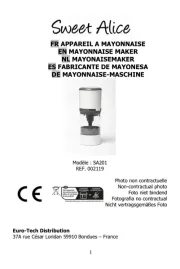
15 September 2025

15 September 2025

15 September 2025
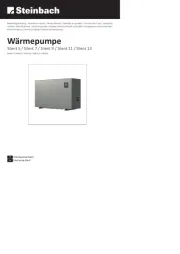
15 September 2025
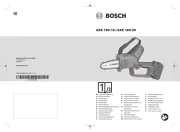
15 September 2025
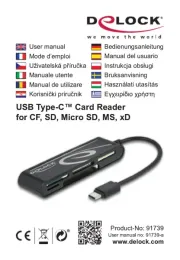
15 September 2025

15 September 2025
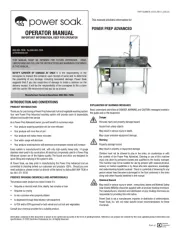
15 September 2025

15 September 2025
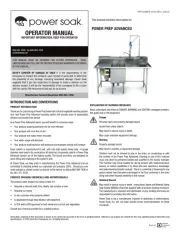
15 September 2025